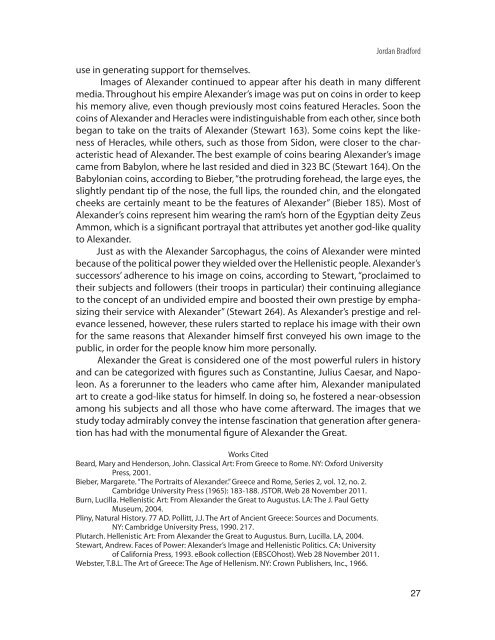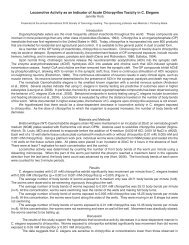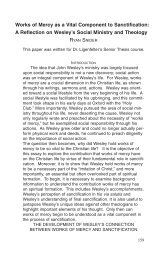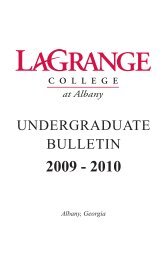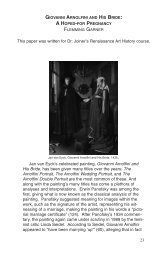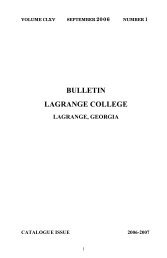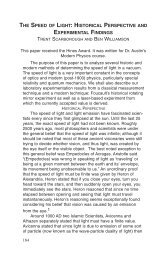Alexander The Great in Art
Alexander The Great in Art
Alexander The Great in Art
You also want an ePaper? Increase the reach of your titles
YUMPU automatically turns print PDFs into web optimized ePapers that Google loves.
use <strong>in</strong> generat<strong>in</strong>g support for themselves.<br />
Images of <strong>Alexander</strong> cont<strong>in</strong>ued to appear after his death <strong>in</strong> many different<br />
media. Throughout his empire <strong>Alexander</strong>’s image was put on co<strong>in</strong>s <strong>in</strong> order to keep<br />
his memory alive, even though previously most co<strong>in</strong>s featured Heracles. Soon the<br />
co<strong>in</strong>s of <strong>Alexander</strong> and Heracles were <strong>in</strong>dist<strong>in</strong>guishable from each other, s<strong>in</strong>ce both<br />
began to take on the traits of <strong>Alexander</strong> (Stewart 163). Some co<strong>in</strong>s kept the likeness<br />
of Heracles, while others, such as those from Sidon, were closer to the characteristic<br />
head of <strong>Alexander</strong>. <strong>The</strong> best example of co<strong>in</strong>s bear<strong>in</strong>g <strong>Alexander</strong>’s image<br />
came from Babylon, where he last resided and died <strong>in</strong> 323 BC (Stewart 164). On the<br />
Babylonian co<strong>in</strong>s, accord<strong>in</strong>g to Bieber, “the protrud<strong>in</strong>g forehead, the large eyes, the<br />
slightly pendant tip of the nose, the full lips, the rounded ch<strong>in</strong>, and the elongated<br />
cheeks are certa<strong>in</strong>ly meant to be the features of <strong>Alexander</strong>” (Bieber 185). Most of<br />
<strong>Alexander</strong>’s co<strong>in</strong>s represent him wear<strong>in</strong>g the ram’s horn of the Egyptian deity Zeus<br />
Ammon, which is a significant portrayal that attributes yet another god-like quality<br />
to <strong>Alexander</strong>.<br />
Just as with the <strong>Alexander</strong> Sarcophagus, the co<strong>in</strong>s of <strong>Alexander</strong> were m<strong>in</strong>ted<br />
because of the political power they wielded over the Hellenistic people. <strong>Alexander</strong>’s<br />
successors’ adherence to his image on co<strong>in</strong>s, accord<strong>in</strong>g to Stewart, “proclaimed to<br />
their subjects and followers (their troops <strong>in</strong> particular) their cont<strong>in</strong>u<strong>in</strong>g allegiance<br />
to the concept of an undivided empire and boosted their own prestige by emphasiz<strong>in</strong>g<br />
their service with <strong>Alexander</strong>” (Stewart 264). As <strong>Alexander</strong>’s prestige and relevance<br />
lessened, however, these rulers started to replace his image with their own<br />
for the same reasons that <strong>Alexander</strong> himself first conveyed his own image to the<br />
public, <strong>in</strong> order for the people know him more personally.<br />
<strong>Alexander</strong> the <strong>Great</strong> is considered one of the most powerful rulers <strong>in</strong> history<br />
and can be categorized with figures such as Constant<strong>in</strong>e, Julius Caesar, and Napoleon.<br />
As a forerunner to the leaders who came after him, <strong>Alexander</strong> manipulated<br />
art to create a god-like status for himself. In do<strong>in</strong>g so, he fostered a near-obsession<br />
among his subjects and all those who have come afterward. <strong>The</strong> images that we<br />
study today admirably convey the <strong>in</strong>tense fasc<strong>in</strong>ation that generation after generation<br />
has had with the monumental figure of <strong>Alexander</strong> the <strong>Great</strong>.<br />
Works Cited<br />
Beard, Mary and Henderson, John. Classical <strong>Art</strong>: From Greece to Rome. NY: Oxford University<br />
Press, 2001.<br />
Bieber, Margarete. “<strong>The</strong> Portraits of <strong>Alexander</strong>.” Greece and Rome, Series 2, vol. 12, no. 2.<br />
Cambridge University Press (1965): 183-188. JSTOR. Web 28 November 2011.<br />
Burn, Lucilla. Hellenistic <strong>Art</strong>: From <strong>Alexander</strong> the <strong>Great</strong> to Augustus. LA: <strong>The</strong> J. Paul Getty<br />
Museum, 2004.<br />
Pl<strong>in</strong>y, Natural History. 77 AD. Pollitt, J.J. <strong>The</strong> <strong>Art</strong> of Ancient Greece: Sources and Documents.<br />
NY: Cambridge University Press, 1990. 217.<br />
Plutarch. Hellenistic <strong>Art</strong>: From <strong>Alexander</strong> the <strong>Great</strong> to Augustus. Burn, Lucilla. LA, 2004.<br />
Stewart, Andrew. Faces of Power: <strong>Alexander</strong>’s Image and Hellenistic Politics. CA: University<br />
of California Press, 1993. eBook collection (EBSCOhost). Web 28 November 2011.<br />
Webster, T.B.L. <strong>The</strong> <strong>Art</strong> of Greece: <strong>The</strong> Age of Hellenism. NY: Crown Publishers, Inc., 1966.<br />
Jordan Bradford


